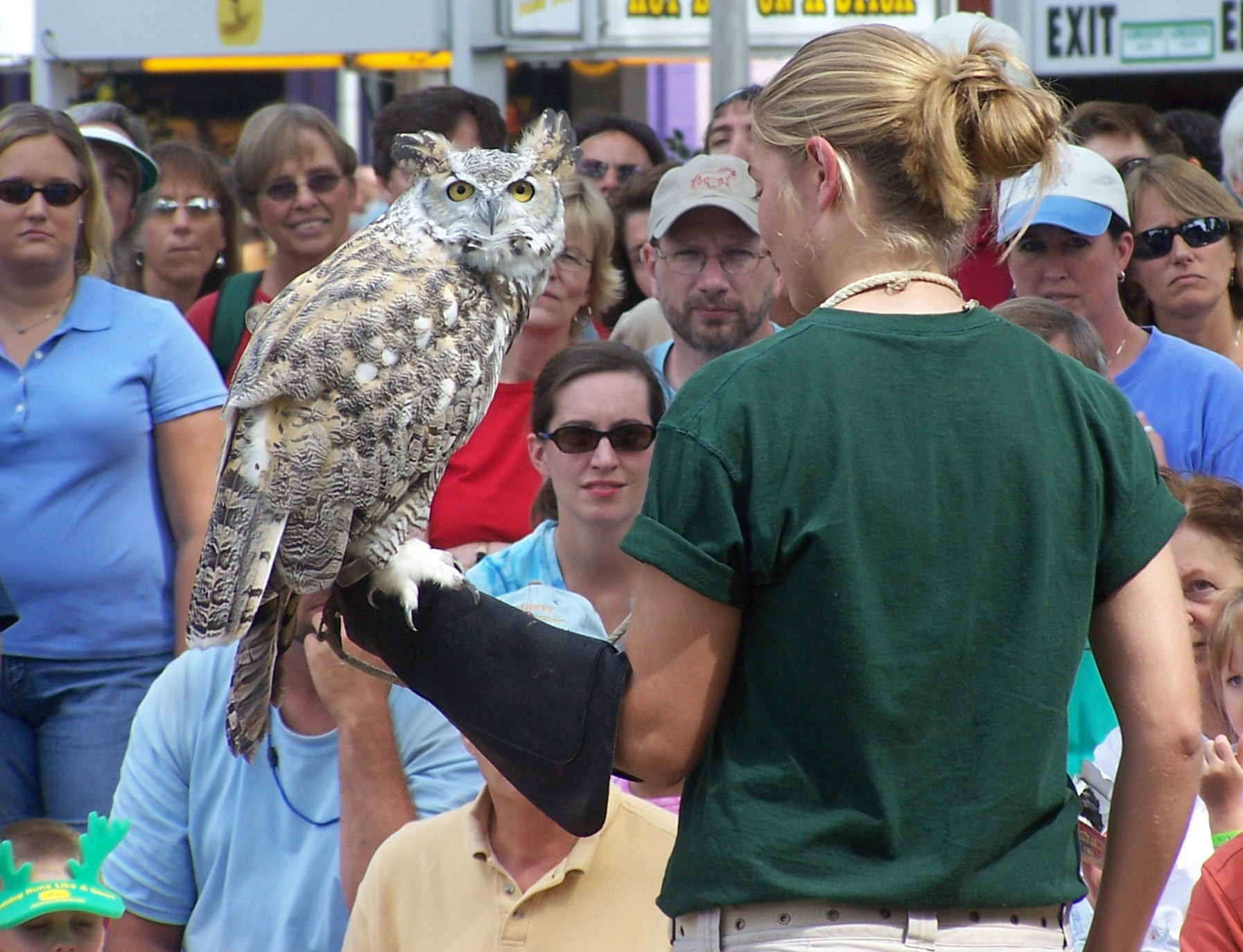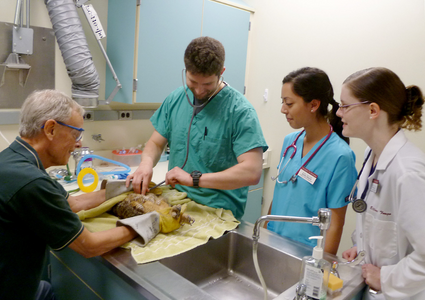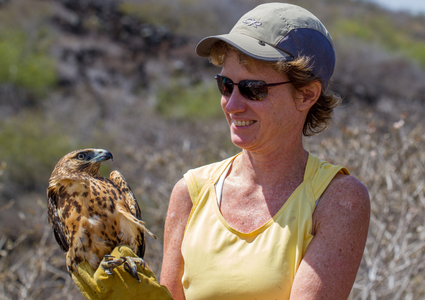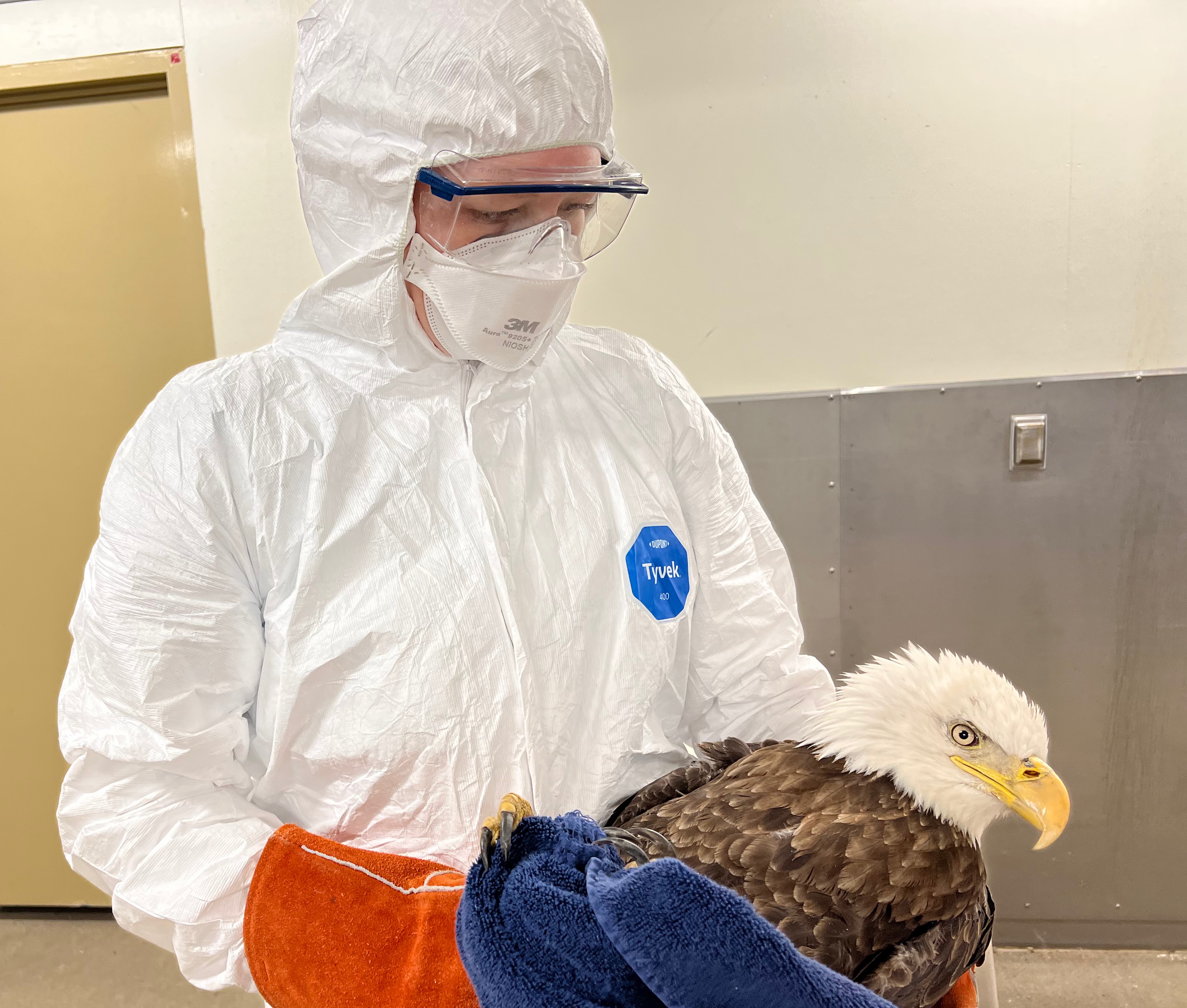Soaring higher, reaching farther
The Raptor Center’s impact is ever-expanding as its patient caseload, research, and outreach efforts continue to grow and evolve

The Raptor Center’s impact is ever-expanding as its patient caseload, research, and outreach efforts continue to grow and evolve
Raptor releases events are part of The Raptor Center's public outreach efforts.
More than 50 years ago, while studying the gastrointestinal physiology of young owls, an idea was sparked by Drs. Gary Duke and Pat Redig. They wanted to establish a hospital at the University of Minnesota where birds of prey could get specialized care with the goal of releasing them back to the wild, and different types of data could be collected.
In 1974, this idea became reality and was called the RRRP—the Raptor Research and Rehabilitation Program. The program had humble beginnings in Haecker Hall, the St. Paul campus’ former dairy building then moved to the Animal Science/Veterinary Medicine Building.
Finally in 1989, found its home in the state-of-the-art Gabbert Raptor Center at the corner of Gortner and Fitch Avenues, constructed with the generous support of Don and Louise Gabbert.

Soon thereafter, the raptor program was rebranded as The Raptor Center (TRC) and, embracing its mission of ensuring the health of raptors and the world we share through teaching, research, and service, began to soar.
It became renowned as the leading raptor trauma center in the world for its service to injured, ill, and displaced young raptors. Its growing annual caseload, which has now surpassed 1,000 raptors annually, reached a major milestone in 2022 when it admitted its 30,000th avian patient, an adult red-tailed hawk entrapped in electric netting.
The large caseload paved the way for developing fundamental treatments and procedures, such as avian orthopedic and anesthesia techniques that are used across the globe today, for developing outreach and professional teaching programs, and for conducting a variety of research initiatives.
The impact of TRC’s work through the years has reached far beyond the patients it treats. In addition to its raptor hospital, TRC has a robust outreach program.
One component is public outreach, utilizing between 25-30 trained raptor ambassadors. These non-releasable birds help to share the stories of clinic patients, mostly admitted due to human activity, to enlighten the public and improve environmental stewardship.
TRC’s conservation messages continue to be shared with over 100,000 people annually through onsite, offsite, and virtual program offerings. Throughout the U.S. and beyond, utilizing raptor ambassadors for outreach has become a popular means among environmental educators to engage the public.

In response, TRC produced “Raptors in Captivity: Guidelines for Care and Management”, a book that was adopted by the United States Fish and Wildlife Service as the gold standard for caring for a collection of raptors used in educational settings. Soon after, TRC developed a popular supportive on-site workshop focusing on training and managing education raptors through the lens of ensuring their long-term welfare.
A second component of TRC’s outreach is a virtual learning environment geared toward veterinary and wildlife professionals. The Raptor Academy program was established in 2015 to share information more broadly and expand accessibility. It consists of a suite of self-studies, instructor-led courses, webinars, and a membership site.
Then, in 2018, as welfare concerns for captive animals came to the forefront, TRC established a third outreach program, Partners for Wildlife, a grant-funded initiative, which focuses on improving the welfare of not just raptors, but all wild animals undergoing rehabilitation.

Over the years, another arm in meeting TRC’s mission, professional teaching, has been a cornerstone method of disseminating information. It has had a global impact, providing internships and externships for veterinary students and veterinary technician students from 27 different countries. Currently, undergraduate courses are also offered as part of a collaborative College of Food, Agriculture, and Natural Resource Sciences minor in wildlife care and handling.
In addition to service and outreach, TRC works toward its mission through research. Thirty thousand patients have provided TRC with a large amount of knowledge and data to engage in research both independently and collaboratively.
Its portfolio consists of a broad array of projects such as treatment protocols for raptor ailments such as aspergillosis and lead toxicity, antimicrobial resistance, physiological measurement of stress, the prevalence of toxicities in local and migrating raptors, and fieldwork to assist in the restoration of endangered species—the bald eagle and peregrine falcon.

TRC staff also provided guidance as part of the working group to repopulate the endangered California Condor in California and Arizona, directly helped mitigate mortality of Galapagos hawks during rodent eradication efforts in Galapagos, and is currently working with the St. Anthony Falls Lab and the Department of Speech-Language-Hearing Science at the U of MN to investigate the possibility of developing an auditory deterrent to help mitigate eagle mortality at wind energy farms.
As top-of-the-food-chain predators, raptors are sentinels for the health of the shared environment, exemplifying the One Health Model. This has positioned TRC well to expand its research focus to be a partner in wild bird disease surveillance of infectious diseases such as West Nile virus and most recently, highly pathogenic avian influenza. TRC is recognized as a leader in gathering and disseminating information in a timely fashion to help professionals navigate these diseases and establish sound biosecurity practices to minimize their impact.

Over the past five decades a program that had humble beginnings as a hospital for birds of prey has evolved into an organization respected globally for its avian medical and rehabilitation practices, public outreach, clinical training program, and research.
In the next 50 years, it looks to expand its impact in the ecosystem health sphere through new partnerships with global organizations on addressing emerging and reemerging diseases of concern, new local and international training opportunities for professionals, and new innovative ways to educate and excite the community with conservation and environmental health topics.